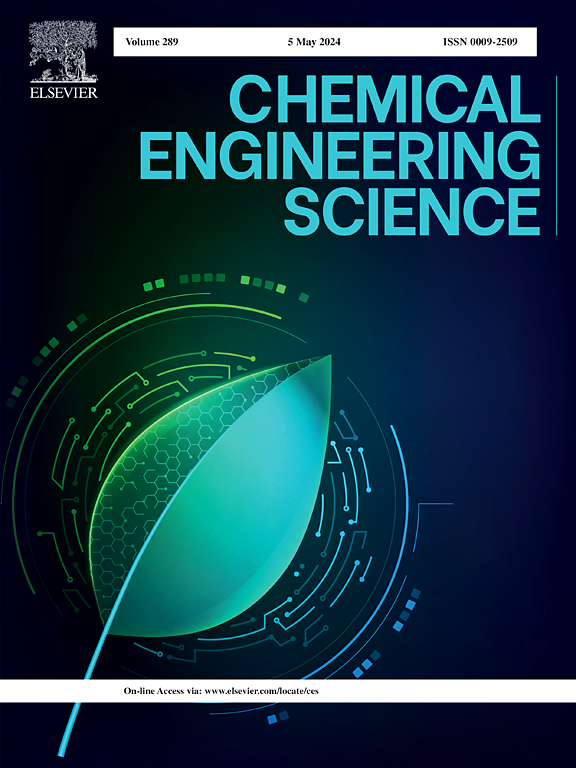Dual analysis of degradation mechanisms: Unified models integrate the oxidation–reduction potentials of oxidants with the molecular structures of volatile organic compounds to improve predictive performance
IF 4.1
2区 工程技术
Q2 ENGINEERING, CHEMICAL
引用次数: 0
Abstract
The rate constants (k) for the reaction of oxidants with volatile organic pollutants (VOCs) are key parameters to assess the ecological risk of VOCs. Herein, the k datasets of four representative oxidants, namely hydroxyl radicals (·OH), chlorine radicals (·Cl), nitrate radicals (·NO3), and ozone (O3), were systematically integrated into a comprehensive Unified dataset. Molecular descriptors, quantum chemical descriptors and Fukui indices were employed to fully characterize VOCs structure. Models for predicting k for four oxidants were developed using six machine learning algorithms (Categorical boosting, Gradient boosting decision tree, Light gradient boosting machine, Random Forest, Extreme gradient boosting and Support vector machine), and the feasibility of improving model performance by using oxidation reduction potential (ORP) as a link to integrate four single oxidant datasets into one unified dataset was explored. Model evaluation indicated that the predictive performance of the unified models (R2ext = 0.884–0.948) was superior to that of the single oxidant (R2ext = 0.591–0.884), with the best performance of the unified XGB model (R2adj = 0.996, Q2ext = 0.948). According to Shapley’s additive interpretation, the degradation efficiency of VOCs by different oxidants follows the order: ·Cl > ·OH > ·NO3 > O3. The degradation process was primarily influenced by the ability of transferring and receiving electrons, van der Waals volume, ionization potential and electronegativity of VOCs. This study demonstrated the effectiveness of combining small datasets of k values to improve the performance of models, providing a useful tool for predicting k values in the atmosphere.


降解机制的双重分析:统一的模型将氧化剂的氧化还原电位与挥发性有机化合物的分子结构相结合,以提高预测性能
氧化剂与挥发性有机污染物(VOCs)反应的速率常数(k)是评价VOCs生态风险的关键参数。本文将羟基自由基(·OH)、氯自由基(·Cl)、硝酸盐自由基(·NO3)和臭氧(O3) 4种具有代表性的氧化剂k个数据集系统整合为一个综合的统一数据集。利用分子描述符、量子化学描述符和Fukui指数全面表征VOCs结构。使用六种机器学习算法(分类增强、梯度增强决策树、轻梯度增强机、随机森林、极端梯度增强和支持向量机)开发了预测四种氧化剂k的模型。模型评价表明,统一模型(R2ext = 0.884-0.948)的预测性能优于单一氧化剂(R2ext = 0.591-0.884),其中统一XGB模型(R2adj = 0.996,Q2ext = 0.948)的预测性能最好。根据Shapley的加性解释,不同氧化剂对VOCs的降解效率依次为:·Cl >;·哦比;·NO3 祝辞 O3。降解过程主要受挥发性有机化合物的电子转移和接收能力、范德华体积、电离势和电负性的影响。本研究证明了结合小数据集的k值来提高模型性能的有效性,为预测大气中的k值提供了一个有用的工具。
本文章由计算机程序翻译,如有差异,请以英文原文为准。
求助全文
约1分钟内获得全文
求助全文
来源期刊

Chemical Engineering Science
工程技术-工程:化工
CiteScore
7.50
自引率
8.50%
发文量
1025
审稿时长
50 days
期刊介绍:
Chemical engineering enables the transformation of natural resources and energy into useful products for society. It draws on and applies natural sciences, mathematics and economics, and has developed fundamental engineering science that underpins the discipline.
Chemical Engineering Science (CES) has been publishing papers on the fundamentals of chemical engineering since 1951. CES is the platform where the most significant advances in the discipline have ever since been published. Chemical Engineering Science has accompanied and sustained chemical engineering through its development into the vibrant and broad scientific discipline it is today.
 求助内容:
求助内容: 应助结果提醒方式:
应助结果提醒方式:


